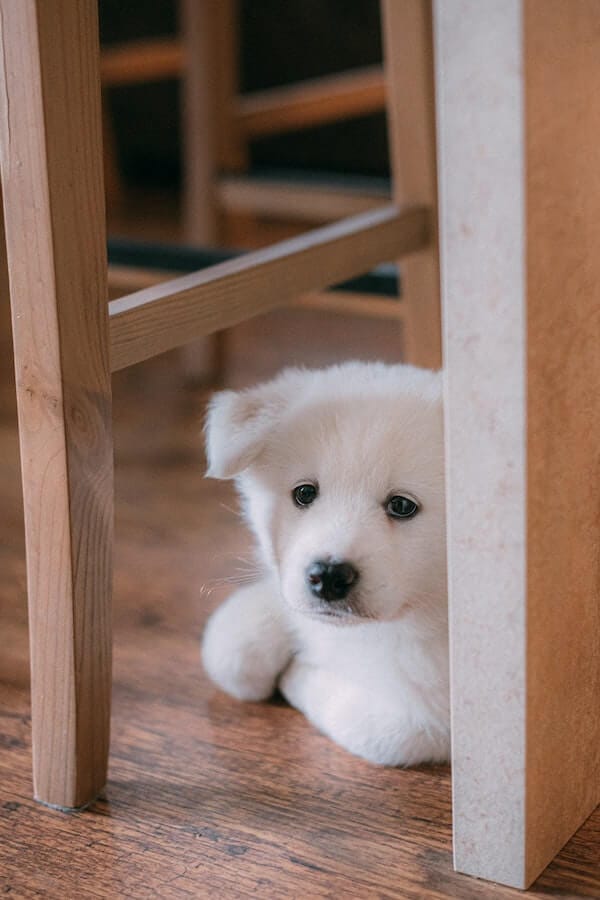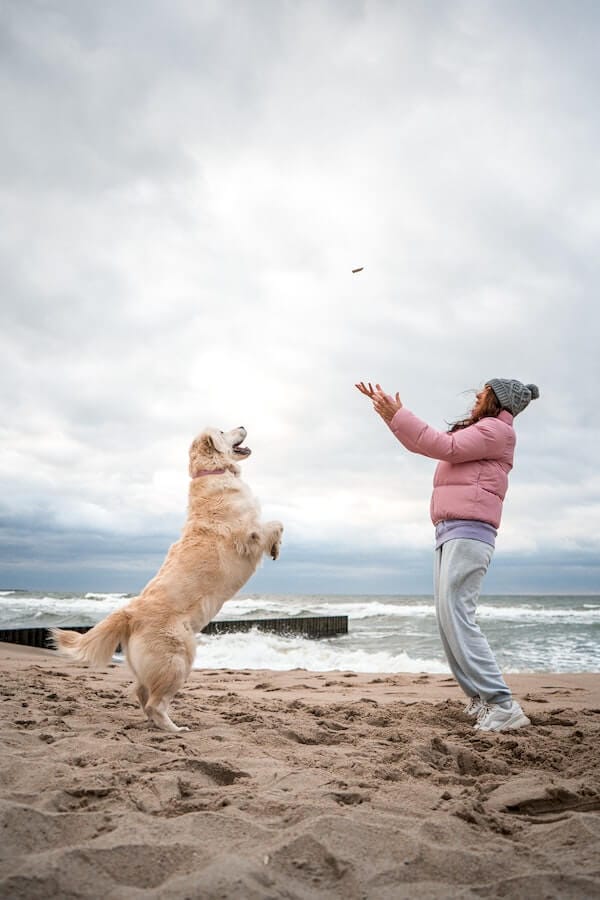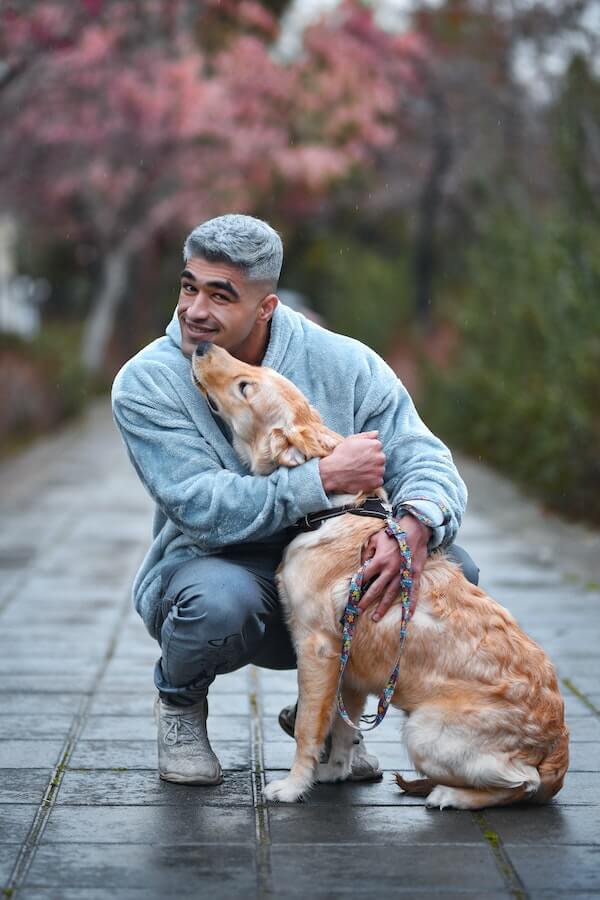
Do you often feel guilty that your dog is feeling anxious? Are you accidentally causing your dog anxiety?
You might be surprised to find out that it may be caused by something completely unintentional on your part!
It might not be as apparent as you think. From constantly petting them to forgetting to exercise, there are many behaviors that can cause a canine companion stress.
Read on to learn more about how the little things we do can impact our furry friends’ mental well-being and what changes we should make to give them some much-needed peace of mind.
Can dogs get anxiety from their owners?
Yes, it is entirely possible for dogs to become anxious due to their owner’s behaviors.
In fact, psychological research has found that our canine companions are surprisingly adept at reading and responding to human facial expressions, vocal tones, and body language—sometimes even more so than humans!
This means that if an owner unwittingly displays anxious behavior (like excessive worrying or speaking in a high-pitched voice), the dog may sense and mirror this sentiment internally as anxiety.
Here are 10 ways owners might give anxiety to their dogs:
1. Not providing enough physical exercise:
One of the main causes of anxiety in dogs is not getting enough physical activity every day. Regular exercise helps release endorphins which act as natural stress relievers for your pup.
2. Not providing enough mental stimulation:
Many dogs suffer from boredom-related anxiety if they don’t get enough mental stimulation. This could include puzzle toys, training, and interactive playtime with other people or pets.
3. Ignoring signs of distress:
It’s important to be aware of subtle signals indicating that your dog may be feeling anxious such as lip licking, yawning, and cowering.
By responding quickly to these signals, you can help alleviate some of their stress before it escalates further.

4. Overreacting to a situation:
Dogs are very perceptive when it comes to picking up on even the most subtle changes in our demeanor or energy levels—so if we panic or act erratically, they may become anxious too.
5. Excessive worrying or speaking in a high-pitched voice :
As mentioned earlier, dogs are very attuned to our emotional and physical states and can mirror our behavior. If we’re anxious or stressed, chances are they will be as well!
6. Not spending enough time with them:
Dogs need attention, love, and affection just like humans do—and if they don’t get it then they may suffer from anxiety due to separation issues.
7. Being inconsistent with their routines:
Dogs thrive on consistency and predictability so any sudden changes in routine (like leaving for work earlier than usual) may trigger feelings of worry and fear for them.
8. Not providing enough socialization opportunities:
Socialization is key to helping dogs adapt to new environments and people without feeling anxious or scared.
9. Exposing them to loud noises:
Dogs are sensitive animals and can react badly to sudden changes in sound levels—particularly if it’s something they don’t expect or recognize (like a thunderstorm).
10. Ignoring them when they need comfort:
If your dog is feeling anxious or scared, it’s important that you respond with comforting words and gentle petting so that he knows he can rely on you for support.
Doing this will help him build up a sense of trust and security which may prevent future episodes of anxiety.
What is a good way to deal with a dog with anxiety?
Pets can experience anxiety too. Unfortunately, if we don’t recognize the signs of anxiety in our furry friends, it can be easy to accidentally cause them distress. Here are five ways to help your pup get back on track:
1. Provide Plenty of Exercise:
Regular exercise is one of the best things you can do for an anxious dog. Take them out for walks and play fetch in the yard or visit a local dog park.
This will provide mental stimulation while helping to expend their energy, which could otherwise manifest as destructive behaviors in cases of anxiety.

2. Create a Safe Space:
Having a safe space for your dog is essential when dealing with anxiety issues. Designate an area in the home where they can go any time they need to feel secure and comfortable.
This can be done by providing them with a bed or crate that they can use as their own personal oasis.
3. Utilize Desensitization Techniques:
If your pooch is exhibiting anxious behaviors due to certain triggers, it’s important to desensitize them to the situation at hand.
For example, if your pup gets anxious when someone knocks on the door, start by introducing very soft taps and slowly increasing the volume until they are comfortable with a normal knock.
4. Incorporate Calming Scents:
Aromatherapy is a great way to help calm an anxious dog. Try diffusing calming essential oils such as lavender in their safe space or dabbing some onto their favorite toy or blanket.
5. Spend Quality Time:
Spend quality time with your pup to help them feel secure and loved in times of anxiety.
Go for leisurely walks, play interactive games such as tug-of-war, practice basic commands, or just cuddle up and watch a movie together.
These activities will help establish a strong bond between you while keeping their anxiety levels at bay.

Conclusion
Ultimately, when it comes to your pup’s anxiety levels, the best thing you can do is be aware of their behavior and emotions.
If you think they may be stressed or anxious, take a step back and try to identify any patterns in their behaviors that might suggest an underlying issue.
As always, if your concern persists, consult with your vet for advice.
Even if you are accidentally causing your dog anxiety, there are many simple strategies and treatments that can help them lead a more relaxed life.
After all, our furry friends deserve some peace of mind too!


GIPHY App Key not set. Please check settings